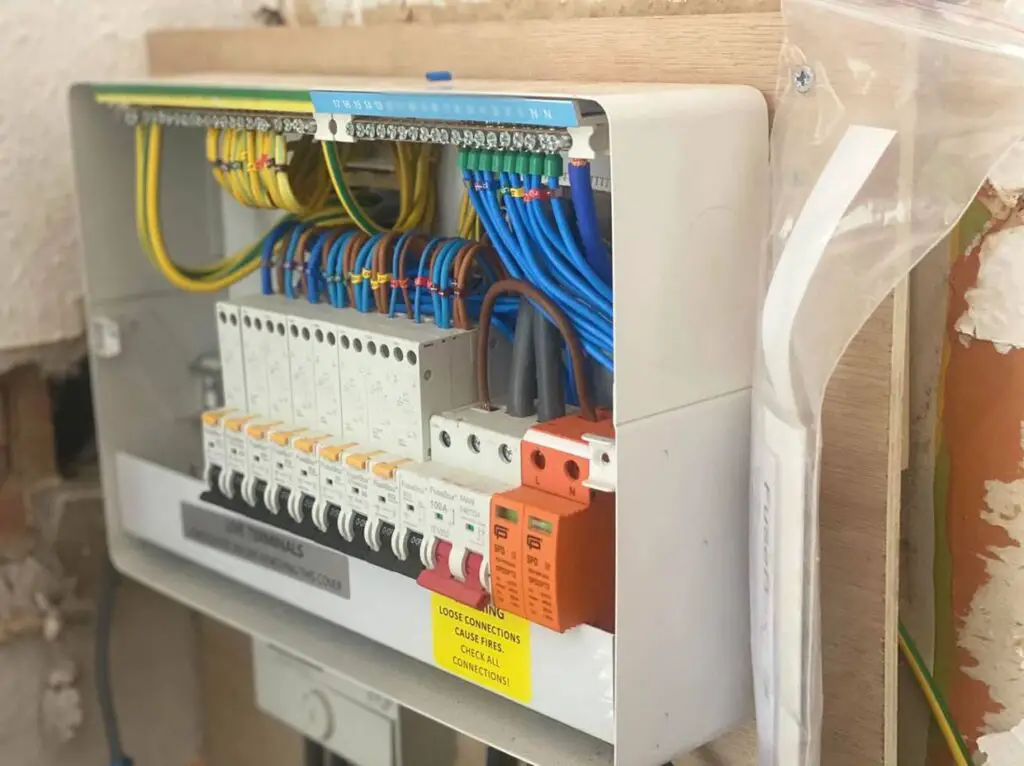
let’s briefly discuss why house rewiring is important. Over time, electrical systems in houses can deteriorate, leading to potential hazards such as electrical fires and shocks.
Rewiring ensures the safety of your home and loved ones by replacing outdated, faulty, or hazardous wiring with new, reliable, and efficient electrical systems.
Government Grants and Schemes
1- Energy Company Obligation (ECO): The Energy Company Obligation is a government scheme aimed at helping low-income and vulnerable households with energy-saving measures.
Under the ECO, you may be eligible for free or heavily subsidized house rewiring if you meet specific criteria, such as receiving certain benefits or living in a property with an energy efficiency rating below a certain level.
2- Local Authority Grants: Some local authorities offer grants or financial assistance programs to homeowners for essential home improvements, including house rewiring.
These grants are usually targeted toward low-income households or those living in properties with significant safety concerns.
Reach out to your local council or housing department to inquire about any available grants or schemes in your area.
Non-Profit Organizations and Charities
1- Electrical Safety First is a UK-based charity committed to promoting electrical safety.
They run various campaigns and initiatives to raise awareness and provide assistance to individuals in need.
Through their initiatives, you may have the opportunity to receive free or discounted house rewiring, particularly if you are living in hazardous conditions or facing financial hardship.
2- Community Assistance Programs: Many local community groups and organizations collaborate with electricians, tradespeople, and volunteers to offer free or subsidized house rewiring services to those who cannot afford them.
These programs are often designed to support vulnerable individuals, the elderly, or families with limited resources.
Keep an eye out for community events, workshops, or outreach programs in your area that might provide assistance with house rewiring.
Understanding the Process of House Rewiring
House rewiring is a complex task that requires careful planning and adherence to wiring regulations and safety standards.
Step-by-Step Overview of the Rewiring Process
-
Initial Assessment: A qualified electrician will conduct an initial assessment of your electrical system to determine the extent of the rewiring required. They will inspect the existing wiring, outlets, switches, and fuse box to identify any faults or safety concerns.
-
Planning and Design: Based on the assessment, the electrician will create a detailed plan and design for the rewiring project. This includes determining the number of circuits needed, the location of outlets and switches, and the type of wiring to be used.
-
Disconnecting Power: Before any work can begin, the electrician will disconnect the power supply to ensure the safety of everyone involved. It is crucial to cut off the electricity at the mains to prevent accidental electrocution.
-
Removal of Old Wiring: The electrician will carefully remove the old wiring, ensuring that all cables, sockets, and switches are disconnected properly. This process may involve some disruption, such as creating access points in walls and ceilings.
-
Installation of New Wiring: The electrician will install new wiring throughout the house, following the planned design. This includes running cables behind walls, under floors, and in the attic or crawl spaces. They will also install new outlets, switches, and a modern fuse box.
-
Testing and Certification: Once the new wiring is in place, the electrician will conduct thorough testing to ensure that everything is functioning correctly and meets safety standards.
This may involve checks for electrical continuity, insulation resistance, and polarity. Upon successful testing, the electrician will issue the necessary certification.
Wiring Regulations and Safety Standards to be Followed
During the rewiring process, electricians must adhere to various wiring regulations and safety standards to ensure the safety and integrity of the electrical system.
In the UK, the most commonly followed regulations include:
-
The IET Wiring Regulations (BS 7671): This is the British Standard for electrical installations in the UK. It outlines the requirements for electrical design, installation, inspection, testing, and certification.
-
Building Regulations: These regulations cover electrical installations in dwellings and other buildings. They focus on aspects such as fire safety, electrical safety, and energy efficiency.
-
Part P: Part P of the Building Regulations specifically deals with electrical safety in dwellings. It sets the requirements for electrical installations, including the competence of electricians and the need for certification.
Potential Disruptions During the Rewiring Project and How to Minimize Them
House rewiring can be a disruptive process, but there are steps you can take to minimize the impact on your daily life.
Here are some potential disruptions to anticipate and how to handle them:
1- Loss of Power: During the rewiring process, there will be instances when the power supply needs to be disconnected. It is essential to plan alternative arrangements for lighting, heating, and any other essential electrical needs during this time.
2- Access Points: Electricians may need to create access points in walls, ceilings, or floors to install new wiring. While they will aim to minimize damage, there may be some minor repairs required afterward, such as patching and repainting.
3- Furniture and Belongings: To ensure a smooth rewiring process, it’s advisable to move furniture and valuable belongings away from the work areas. This will protect them from dust, accidental damage, or potential power fluctuations.
4- Communication and Planning: Maintaining open lines of communication with the electrician throughout the rewiring process is crucial. Clearly communicate your expectations, concerns, and any specific requirements you may have. It is also important to plan the project timeline with the electrician to minimize disruptions and ensure that the work is completed efficiently.
5- Stay Informed: Keep yourself informed about the progress of the rewiring project and any changes or updates that may arise. Regularly communicate with the electrician to address any questions or concerns promptly.
Conclusion
Getting your house rewired for free in 2025 requires exploring multiple options, including government grants, local authority assistance, and support from charities. As eligibility criteria and funding availability vary, research and direct outreach to relevant organisations will help you determine the best way to secure assistance.
Prioritising electrical safety ensures not only compliance with modern standards but also long-term security for you and your family.


